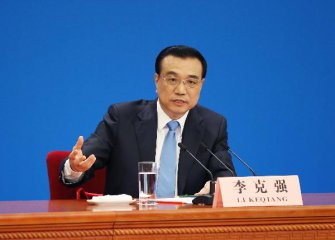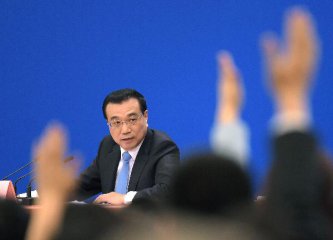
The keynote of China's macroeconomic regulations will be risk control and restructuring in the coming months as major macro data for April point in that direction.
Mild inflation, fast-growing investment in infrastructure, falling new loans and reduced factory gate prices all point to the need for improved risk control and continued restructuring, according to analysts.
NEW LOANS FALL
Given seasonal factors, new loans in April are likely to decline from March, said Lian Ping, chief economist at Bank of Communications, quoted by China Securities Journal.
"The ratio of medium and long-term credit for residents may gradually drop due to tightened real estate regulation." Zhu Jianfang, chief economist with Citic Securities, noted the amount of growth in April mortgages might reduce significantly.
He said the country's credit expansion may slow down this year due to prudent monetary policies, and the growth of outstanding loans is under downward pressure.
"The monetary policy mix of quantitative control and low interest rates will remain unchanged as economic stability tops the government agenda," said Hu Yuexiao, chief economist of Shanghai Securities.
While some worried intensive financial regulation would affect the country's economic growth, the April monetary and credit figures would show improving policy coordination among regulators, said Liang Hong, chief economist with China International Capital Corporation Limited.
Liang predicted that the adjusted growth of social financing would remain around 15.6 percent in April.
INFLATIONARY PRESSURE LOW
Pork prices are expected to report a sharp decline of above 7 percent year on year in April due to a high base last year, and prices of fresh vegetables might continue a seasonal fall, said Zhu, adding prices of aquatic products and grains might rise slightly to pull inflation.
Lian made a preliminary prediction that the April Consumer Price Index (CPI) might increase about 1 to 1.2 percent from the same period of last year, slightly higher compared to March. He said the CPI might drop in the second half of this year due to prudent monetary policies and weak demand.
"There is no obvious inflationary pressure in 2017," Lian said, predicting that the full-year CPI may drop to around 2 percent. As for growth of the Producer Price Index (PPI), which measures costs of goods at the factory gate, Zhu predicted a month-on-month drop of 1.3 percentage points to 6.3 percent in April and a near-zero growth rate at the end of the year due to the high base effect.
INVESTMENT GROWTH FLAT
Lu Zhengwei, chief economist with the Industrial Bank, predicted 9.3-percent year-on-year growth of fixed-asset investment for the first four months of 2017, up 0.1 percentage point from the January-March period.
Property investment might rise in April as the growth of commercial house sales is still faster than that of real estate investment, which will contribute to boost the country's fixed asset investment, Lu said.
Liang forecast that urban fixed-asset investment would rise 9 percent year on year from January to April, flat with the first quarter. Investment in the manufacturing and private sectors may keep rising as profits of industrial enterprises recovered substantially, Liang said.
Thanks to efficient risk control and economic restructuring, China's economy has shown signs of firming, reinforced by an expanding manufacturing sector, rising corporate profits, increased rail freight volume, and higher machinery sales.
The country has lowered its 2017 growth target to around 6.5 percent, the lowest target in a quarter of a century, as the government leaves room for economic rebalancing.






















Latest comments